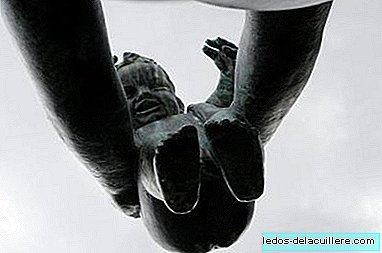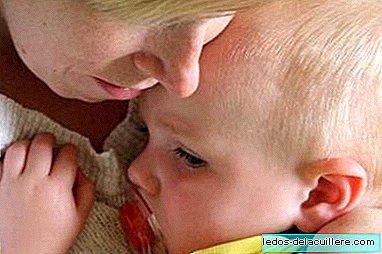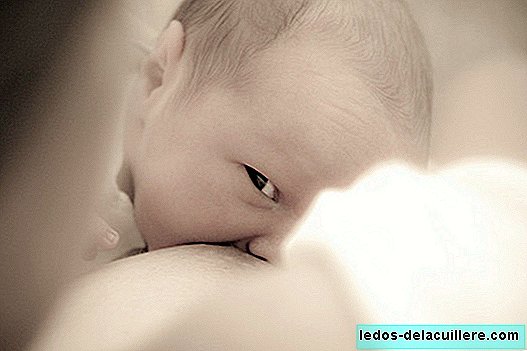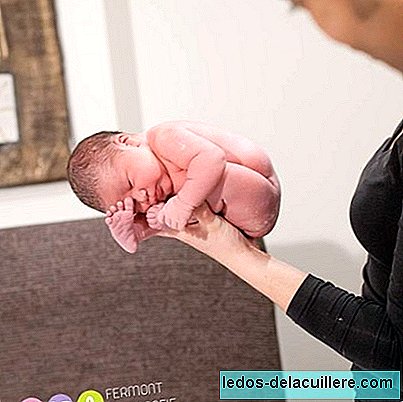
Lola told us a few weeks ago the strange case of stone babies, and we wanted to delve a little deeper into this strange phenomenon that seems like science fiction. But lithopedion or stone babies exist.
Its name comes from the Greek lito, 'stone' and country, paidos, 'boy'). "Lithopedium", "lithopedion" or "lithopedium" is the name given to a extrauterine pregnancy involving a dead and calcified fetus over the years. It is a rare phenomenon (estimated to occur once in about 20,000 pregnancies) as a result of an abdominal or extrauterine pregnancy.
There are several necessary conditions for an “stone baby” to form from an abdominal pregnancy: the fetus must have a survival in the abdomen for more than 12 weeks, that is, it begins to grow, but in the end it does not survive outside the uterus. The fertilized egg has adhered to anywhere in the abdomen, outside the uterus.
If there are no symptoms and ectopic pregnancy is not detected through medical check-ups, the fetus may continue to grow. The development of this pregnancy is the same as for intrauterine abdominal pregnancies until fetal death.
After fetal death, tissue dehydration, calcium infiltration and the petrification process begins. It must remain asymptomatic under aseptic conditions and have a favorable environment for calcification.
This happens in very rare conditions, especially if the fetus is large enough to prevent its expulsion or absorption. That is when it begins to calcify.
How the fetus is calcified
Calcification occurs subcutaneously, and is usually wrapped in scar tissue. The mother's immune system eventually recognizes the fetus as a foreign object and, to protect it from a possible infection, reacts by covering the fetus with a "calcific" substance while the tissues die and become dehydrated.
Lithopedion can occur from the 14th week of gestation and until the end. It takes a long time to accumulate enough calcium deposits that turn it into stone. These would be the calcification phases According to R. D'Aunoy and E. L. King:
Skeletonization, where the bones remain after the disintegration and absorption of the soft tissues.
Adipocere, where soft tissue is replaced by fatty acids, soaps and stearic acids.
Suppuration, the fetus is destroyed after the formation of an abscess.
The formation of the true lithopedion where the fetus and / or membranes calcify to various degrees.

Types of "stone babies"
The images of stone babies are sometimes quite impressive, so we did not want to illustrate this article with photos of lithopedies. But below you will find links to case studies, more information and images. Yes we can point out what classes there are.
F. Küchenmeister ("Ueber Lithopedion") points out that there are several types of lithopeds according to the area and degree of calcification:
Lithokelyphos or lithokeliposis (26% calcification): Only the ovular membrane is calcified and the fetus may be in different stages of decomposition.
Lithokelyphopedion or litokelitopedion (31% calcification): Both are calcified, that is, the fetus and ovular membranes.
Common lithopedion (34%): Only the fetus is calcified.
Documented cases
The "lithopedic" condition was first described in a surgical treatise ("Kitab al Tasrif") by the Arab doctor Abul-Qasim Khakaf ibn al Abbas al Zahravi, better known as Albucasis in the eleventh century, although its existence may be As old as humanity.
Since the last century, remains of “stone babies” have been found in archaeological excavations, the oldest of which dates from 1100 BC, around the world. And contemporary cases of living women have been known.
In the eighteenth century, a woman was operated for the first time to extract the lithopedium, and there are currently documented several cases, such as the one that jumped into the media a few weeks ago, or the one found in this medical document of a reported clinical case by the Bolivian Society of Radiology, or this one from Colombia, from Brazil ... Here we can find more cases of stone babies that have passed to the screens, to literature ... and especially to medical records.
Definitely, the stone lithopedies or babies are real despite appearing to be a myth or news of the spaces dedicated to the paranormal. They are rare, but from time to time we are surprised by news of women who carry these calcified fetuses inside.
Photos | asta.adamonyte and internets_dairy on Flickr-CC More information | Monographs, Obgyn In Babies and more | A woman who had developed a four-month fetus outside the uterus is involved, Risk factors for suffering an ectopic pregnancy












